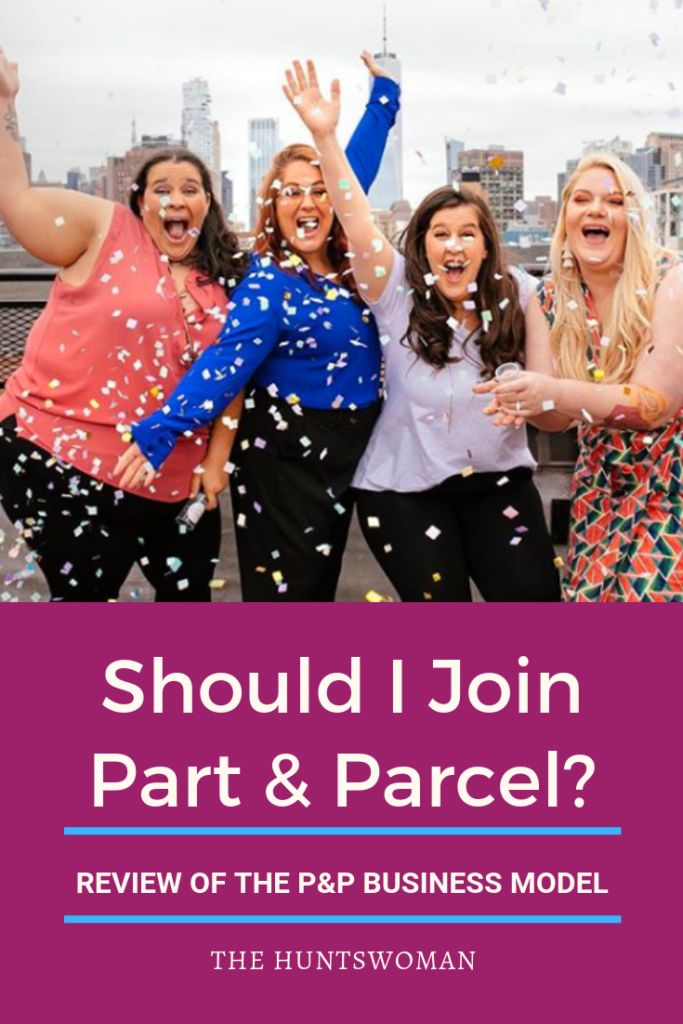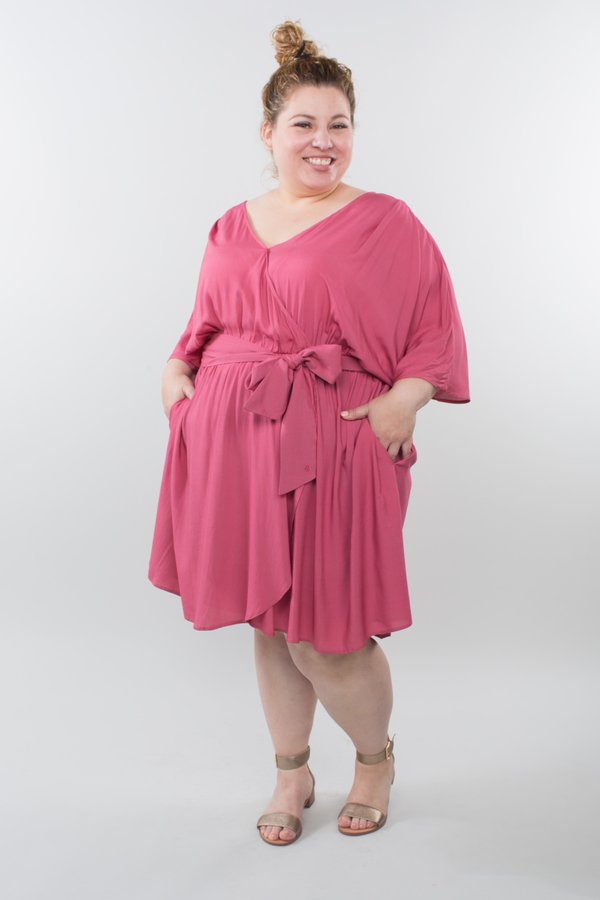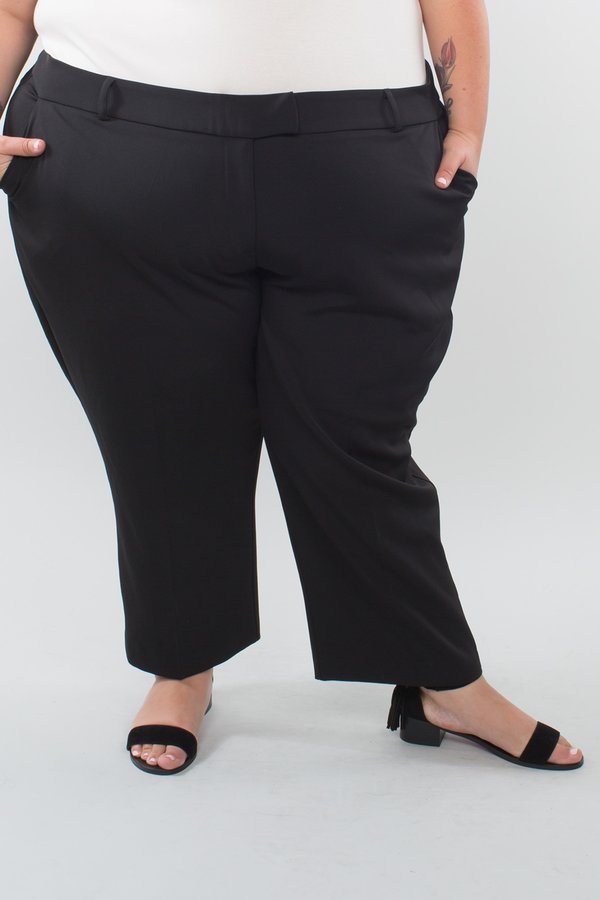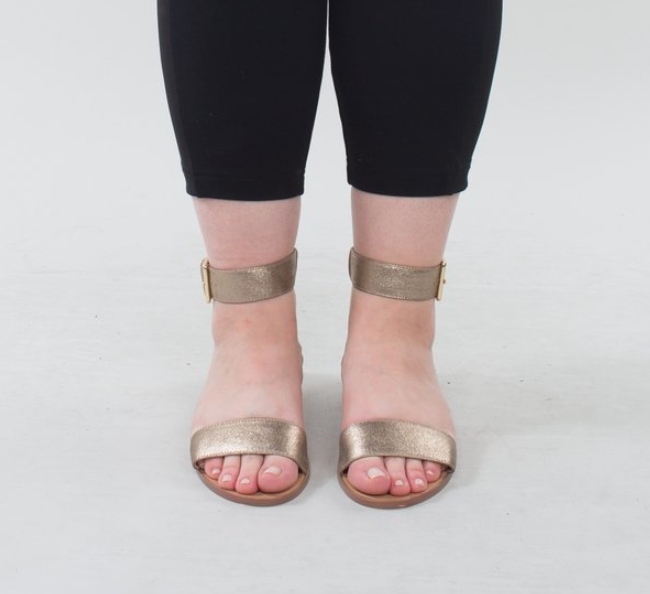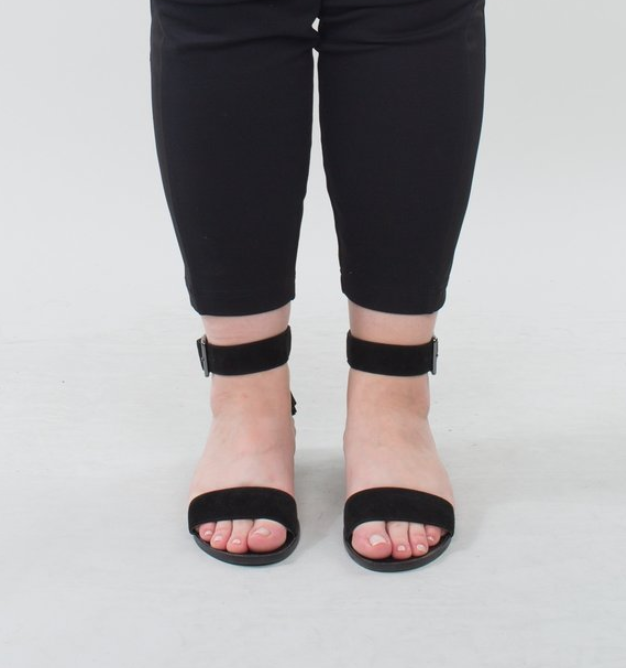Hey there! This post contains affiliate links. Using my links means I earn a commission, which helps me create more rad content. More on affiliates here.
A few months ago, the name “Part & Parcel” first popped into my email inbox. I’m always on the lookout for new fashion and clothing brands, and I was intrigued that Part & Parcel has a similar model to companies like LulaRoe. Part & Parcel has raised $4M in funding (woohoo!) and this company is about to make waves.
Seeing blogger friends sign up, as well as questions in plus size fashion Facebook groups, I decided to take a look at what Part & Parcel is up to. Below, you’ll find my thoughts on the fashion aesthetic and business structure. This post is not sponsored, and is basically a result of me being a big old fashion business nerd. I did reach out to the Part & Parcel team with questions, and have included quotes from them.
ALERT!!! Be sure to read to the end, where I have shared whether I think *YOU* should join Part & Parcel.
Notice and Disclaimer: This blog post review has been written using information provided by Part & Parcel and my business background. You are solely responsible for any issues or costs associated with your choice to become a Part & Parcel partner.
Origin Story: Part & Parcel
Technically, the recent launch of Part & Parcel is actually a relaunch. The brand made its debut on Kickstarter in 2017, raising $45,000 for wide calf booths in four calf widths.
Brand founder and CEO, Lauren Haber Jonas, is both a plus size fashion blogger (The Pear Shape) and was the Director of Category Expansion at Poshmark for three years, leaving in 2017 to run Poshmark.
The Poshmark connection made a lightbulb go off in my brain. The social selling aspect of Poshmark definitely influenced P&P.
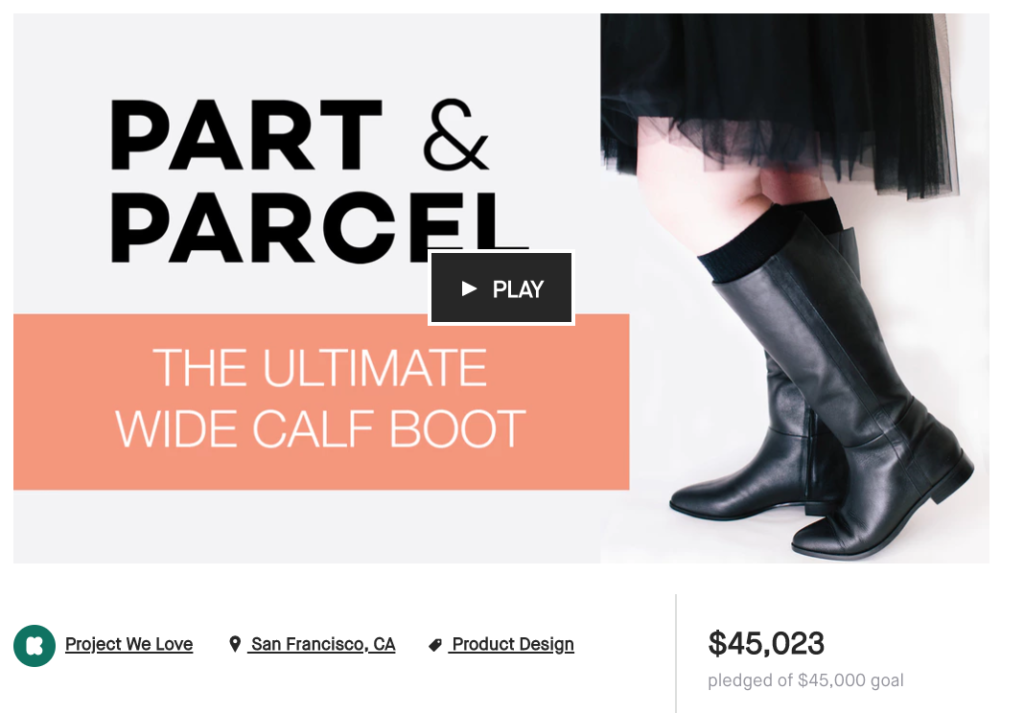
Wardrobe Staples & Business Casual Attire: Fashion Review
Part & Parcel has launched with wardrobe staples (ex: cigarette pants) as well as some fun and colorful pieces. I think this is a great way to test what their community members really want! My fave piece is the white blazer.
Scrolling through the collection page on their website, I was stoked to see a variety of plus size bodies wearing the clothes. Part & Parcel is not interested in only showing an idealized plus body, and I applaud them for it! Babes with different shapes are modeling the clothes, as well as being shown in imagery throughout the site and social media.
Size Range & Price
The brand also goes up to a size 36, making it one of the most inclusive plus size brands on the market. (I haven’t tried any of the pieces IRL, so I can’t comment on fit or construction.)
Prices for clothing ranges from $45 for a t-shirt to $170 for a blazer. TBH, I’m not sure what adoption rate this price point will see.
See the full collection here.
Let’s Talk About “Dimensional Sizing”
If you’re plus size, you have a list of fit issues and complaints to share. My #1 problem is button up blouses that gape. Other babes have issues with their upper arms fitting.
Part & Parcel designed with these issues in mind, offering different options for upper arms, busts, calf width and waist measurements.
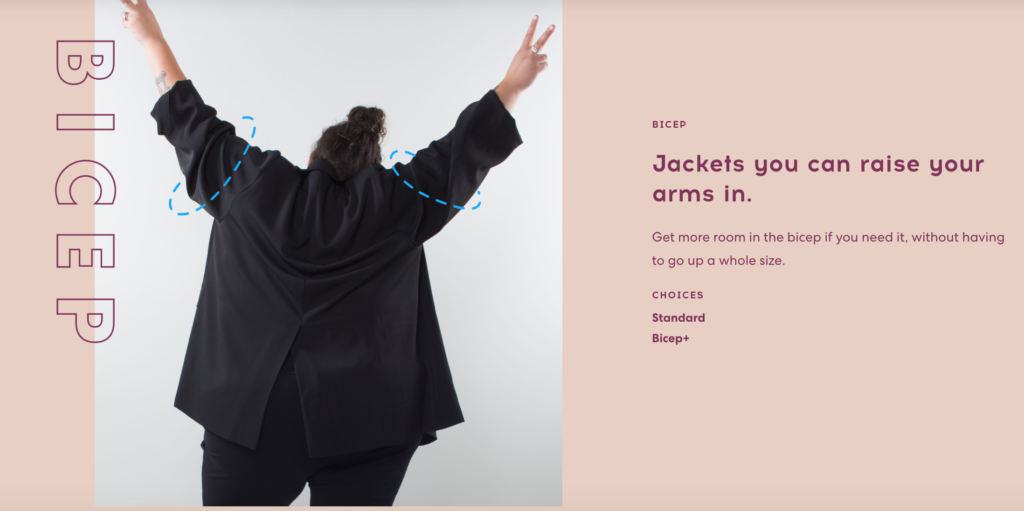
Wait, Calf Sizes?
Yep! Part & Parcel offers boots in 3 different calf widths, as well as flats in a variety of styles. Shoes go from 7-13, all in wide-width. Most of the flats come in black or a gold-ish metallic.
The flats are priced at around $120 USD, but the boots aren’t listed on the website at publication time.
Business Question: Is Part & Parcel a Network Marketing Company?
I’ve seen a few plus size bloggers post about the brand, the #1 question EVERY SINGLE TIME is, “Is this a networking marketing company?”
My answer? We need to define what the heck we mean by “network marketing” and then go from there. Here’s a handy definition from Business Dictionary:
Network Marketing: Direct selling method in which independent-agents serve as distributors of goods and services, and are encouraged to build and manage their own sales force by recruiting and training other independent agents. In this method, commission is earned on the agent’s own sales revenue, as well as on the sales revenue of the sales-force recruited by the agent and his or her recruits (called downline).
So, looking at Part & Parcel, it does and doesn’t fit this definition. Let’s dive in:
A key difference between Part & Parcel and a strict “network marketing” company is:
- Part & Parcel partners do not train each other (traditional network marketing companies have a system of upline/downline training that is INTENSE)
Training works much differently, and Part & Parcel partners are not responsible for training people who sign up under them.
From Part & Parcel: “Part & Parcel partners have full access to the Clubhouse, a virtual office, training center and marketing resource center. They have a library of training articles, videos and digital assets to train their partners.
Part & Parcel also has a supportive Facebook community group page where the headquartered team and partners can interact together. This includes regular Facebook live videos and partner/HQ zoom calls. They also have a knowledge center offered through Zen Desk for customer support, with a chat bot and FAQs. We have more technical tools coming to help Partners grow their business, but can’t yet disclose those tools :)”
A key similarity between Part & Parcel and a strict “network marketing” company is:
- Part & Parcel partners do earn a commission from people who sign up under them.
This is the power of network marketing. As your network grows, your income does as well. Therefore, to figure out if this is a network marketing company, we have to analyze how people make money:
Part & Parcel Commission Structure
Okay, for my fellow business nerds out there – we know that most network marketing companies reward people who “get in early,” because if you have a downline of 1,000 people – you get a cut of their sales. And that’s a LOT of commission money.
But that’s not how Part & Parcel works. The ability to earn from those “under” you is two-levels deep. From the founder, “Part & Parcel’s pay program focuses on partners’ personal efforts and the meaningful connections they build with customers Plus to Plus.”
All of this talk of signups and “downline” can be confusing, so let’s use an example:
- Mary signs up under Susan, and Mary sells $1,000 of P&P products. What % does Susan make? Susan makes 5-7% of Mary’s sales, so $50 – $70.
Taking this one step further.
- If Jane signed up Susan (who signed up Mary), does she get a percentage of Mary’s sales? Jane would earn between 3 – 5% on Mary’s sales, and 5 – 7% on Susan’s sales.
Aaaand one more step.
- Does Elena, the person who signed up Jane, get a percentage of Mary’s sales? (So Elena –> Jane –> Susan –> Mary.)
Nope. Elena is three levels away from Mary.
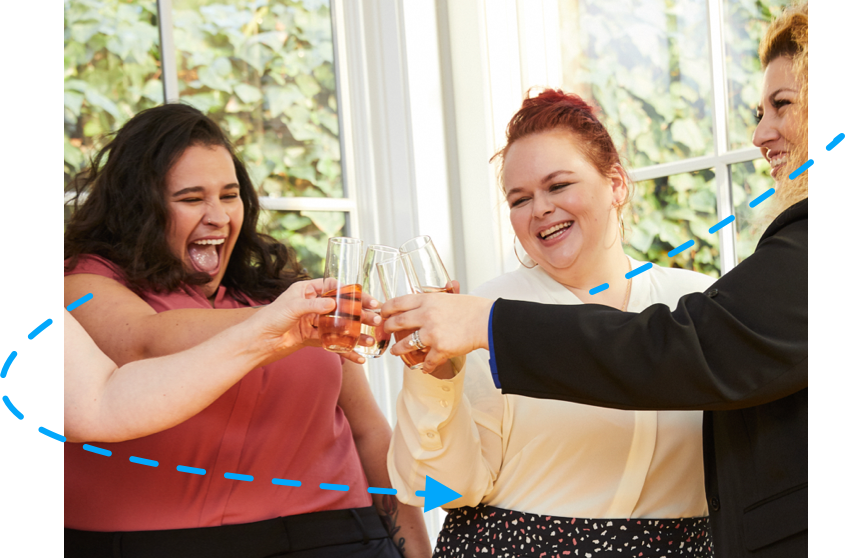
You can find more info on commissions on their website, here.
My Take: In my opinion, Part & Parcel is *not* a network marketing company.
Okay, y’all know I am a no-bullshit type of babe.
Real Talk: I would absolutely be okay if Part & Parcel was a network marketing company.
Seriously. My mom worked in network marketing for a couple of decades, growing her income without a college degree and gaining some pretty dang impressive business skills. She was able to have a flexible schedule, and I learned a lot listening to her lead conference calls from the kitchen table.
BUT THAT SAID, Part & Parcel isn’t a network marketing company. You could argue it’s a “direct sales” company, but the commission structure of a network marketing company is KEY to the definition.
If anything, I’d say that Part & Parcel is a super effective influencer program. I’m honestly surprised I haven’t seen more bloggers sign up.
Monetizing Influence
One of the main reasons I’m stoked about this business model is because it allows women to monetize their recommendations. Bloggers do this via affiliate links, earning around 5% from most plus brands.
Part & Parcel partners earn 30%. Nuff said.

From the Founder: Business Structure
I sent an email to Part & Parcel HQ in San Francisco, asking about the business model.
From the founder, Lauren Haber Jonas: “Part & Parcel is a social commerce community. We empower our brand partners to sell Part & Parcel products through Plus to Plus™, meaning from one plus size woman to another, and to develop a community with each other.
We’ve taken the best of gig economy elements to pair with social selling elements for a flexible way for plus size women to earn additional income. Our partners are not required to purchase inventory or meet minimum monthly sales requirements. Products are shipped directly from Part & Parcel to their customers. Our pay program is simple without complicated restrictions by focusing on personal efforts. Our priority is the health of our community, and is focused on bringing her success.
The company originally launched with shoes, and relaunched this last month with more offerings and a new business model.”
^^TBH, if I were the Part & Parcel team, I would add that response to an FAQ on the website. Distrust of “network marketing” companies has interested ladies hanging back!

Startup Nerd Alert
Raising funding as a fashion brand is a BIG DEAL. VC’s are notoriously resistant to funding fashion companies, because a good chunk of change is spent manufacturing inventory (clothes) before profit is turned.
I was STOKED to see that Part & Parcel had raised $4M in a seed round from Peterson Ventures, Manish Chandra, Village Global, and Lightspeed Venture Partners (lead investor).
(My friend and pro-reseller Miranda over at The Plus Life Blog pointed out that one of the investors, Manish Chandra, is CEO and Founder of Poshmark.)
Not very many plus retailers have raised this amount of cash. Universal Standard has raised $8.5M in 3 rounds. High end and luxury plus retailer, 11 Honore, raised $8M in their Series A round.
As someone who wants to own her own fashion house one day, I am CHEERING at these numbers.
I’m not comfortable saying something like, “Part & Parcel is a good investment because investors have backed it with millions of dollars,” because Silicon Valley et al can make some dumb decisions. However, I am very impressed with the credentials of the investors who backed this round. Chandra, in particular, has a lot to offer the brand.
Jeremy Liew, founder of Lightspeed Venture Partners (lead investor) wrote this piece on Medium detailing why investing in plus size fashion makes business and ethical sense.

My Main Hang Up / Question
Looking at the pieces, specifically the shoes, I wonder, “What materials or processes make the shoes start at $120 USD?”
The Part & Parcel price point is higher than companies with similar products. For example, regular price point we see for a blazer in plus sizes is around $70 USD – and the P&P longline blazer is $170.
We know that plus size customers do buy clothes at over $100 per piece, but Part & Parcel needs to do a better job on educating the consumer. None of the products on the Collections page are clickable, leading to more info on fabric or construction. If this information is only available through contacting a P&P partner, this should be explicitly communicated.
Without seeing more info on sustainability manufacturing practices, and/or info on the quality of materials used, I am on the fence about purchasing.
Should I Join Part & Parcel?
Overall, I think the Part & Parcel model makes sense. From a business coach perspective (consulting site here), here are just a few key questions to ask yourself:
Question #1: How much money do you want to earn?
What’s your end goal with joining Part & Parcel? If it’s just a hobby, totes cool! But if you are joining to start a business, be clear on what you want to see from it and define how much money you want to make.
If you want to earn an extra $1,000 a month, how much product needs to be sold to do that?
Question #2: What’s the time commitment?
How much time are you willing and able to commit to company? Based on the amount of time you have, will you be able to get the results you want?
Question #3: Are you publicly plus size?
Are you okay to talk about plus size fashion publicly? Some people shop in the plus section, but can’t say, “I am a plus size woman.” If that’s you, it will likely be hard to promote this company.
Question #4: Would you buy Part & Parcel clothes at this price point as a regular customer?
I believe in investing in clothes, but it doesn’t matter what I believe! If you are looking for people to purchase from you, you need to make sure your network buys clothes at this price point. Post product images on social media, and see what your plus size friends (and followers!) have to say.
Question (okay, this is a tip) #5: Have you seen the clothes IRL? Before signing up, I would recommend you test out the garments. Look at the seams and examine the manufacturing. How do the clothes compare to what’s already in your closet?
OVERALL: If you’ve never owned a business before, and want to, joining a company like Part & Parcel could train you on the skills you need to thrive. However, I can’t make guarantees, because I’m not running the organization! 😉
FINALLY!
WHEW! This was quite the post. I’ll be adding info and updating it as time goes along. Are you thinking of becoming a Part & Parcel partner? Let me know in the comments what you think!
Looking to up your skills on social media marketing? Be sure to head over to my consulting site, The Huntswoman Group, to see future classes.
